Green Europe Today, November 2, 2021
Author: Tomasz Bułhak
The real estate market has a key role to play on the path to zero carbon emissions. It is estimated that this sector currently accounts for as much as 39% global greenhouse gas emissions . It also produces gigantic amounts of waste – according to forecasts, in 2025 this will reach 2.2 billion tons . The office real estate sector is particularly important in this context – it is in office buildings that the most modern, environmentally friendly technologies make their debut, which over time are also used by developers in housing construction. How can we make new office investments greener so they have a real impact on achieving climate goals?
Green office space
The concept of an ecological office building can be understood in many ways. Firstly, it concerns its architectural design and pro-ecological materials used in the construction process, and secondly – the technologies used, which reduce energy consumption and minimize the negative impact on the environment during operation.
The basic tool signaling that a given investment is in line with the principles of sustainable development are certificates – especially BREEAM and LEED.
– “ Certification systems have changed Polish office buildings. Multi-criteria building assessment systems have become standard practice for both office, logistics and retail properties. Certificates function as marks of quality and confirmation of good practice – whether in construction or related to building management and maintenance. They make it possible to easily compare objects, which stimulates competition on the market and encourages the implementation of more and more modern and effective solutions.
Poland very quickly adopted the practices related to ecological certification – already more than 1,100 facilities can boast of having obtained a certificate. Two standards for the ecological assessment of buildings, LEED and BREEAM, have become particularly popular – they are responsible for nearly 95% of certifications in Poland, and alternative certificates such as HQE (0.5% of projects) or DGNB (1.5%) also sporadically appear. All of the above are environmental certificates, where the main emphasis is on the environmental impact of the property. Solutions and amenities that reduce the negative impact of the property on the environment are assessed – from issues related to location and transport, through the materials used and practices construction, to installation solutions, effective building systems or parameters of the real estate itself. ” – says Andrzej Gutowski, Associate Director, Building Consultancy Services | Green Building Certification, Colliers .
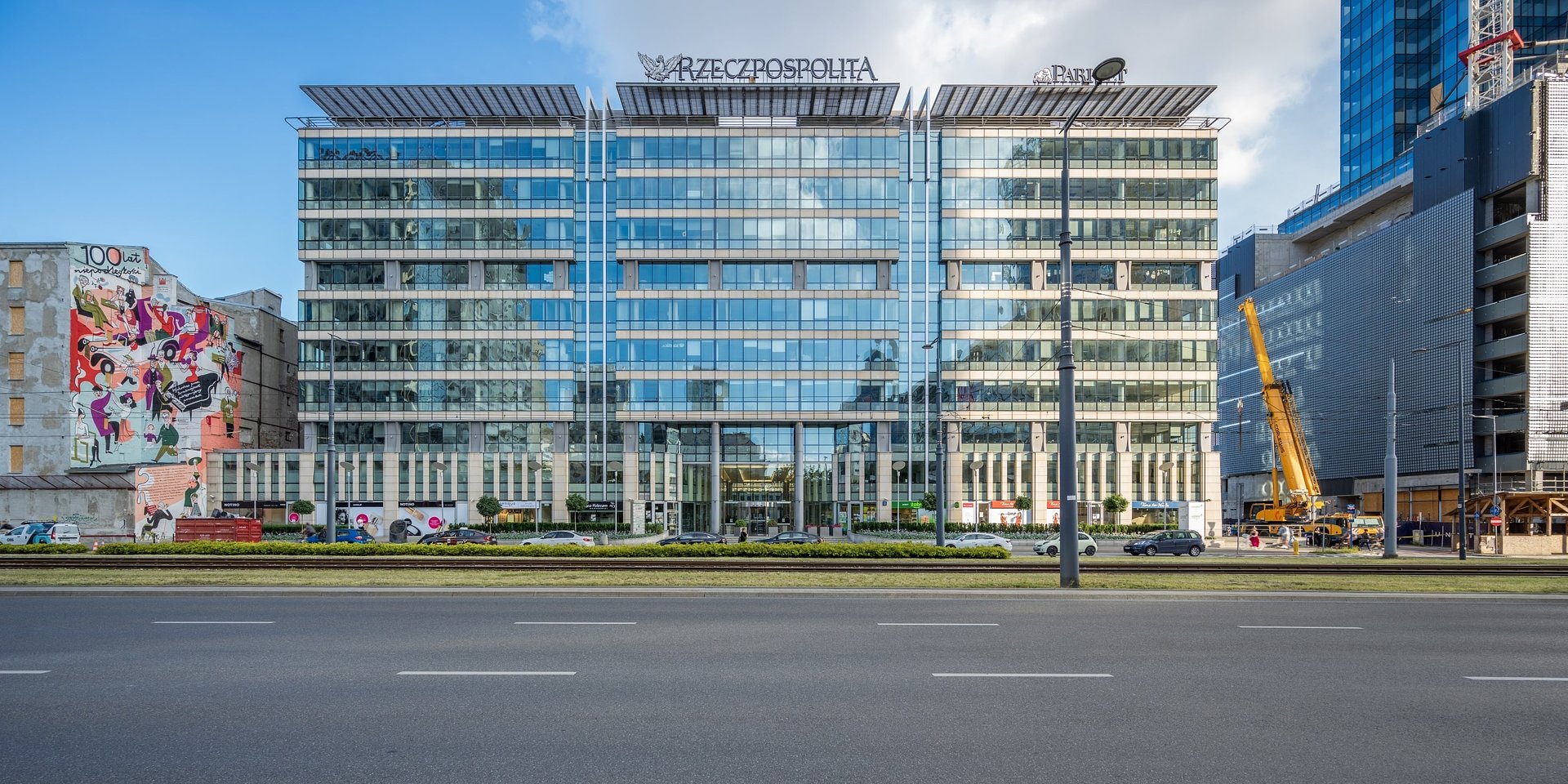
One of the pioneers in the certification of office buildings in Poland is Ghelamco, a developer responsible for the construction of, among others Warsaw Spire, The Warsaw Hub or Warsaw Unit – iconic buldings on Warsaw’s skyline.
“ The first certificate in our Polish portfolio was awarded to the Trinity Park III office building in Warsaw’s Służewiec. Interestingly, we were the first developer in Poland to certify a building in this way. It was over 10 years ago. Today, all Ghelamco office investments are carried out in accordance with the principles of sustainable construction and meet the highest ecological standards “ – says Jarosław Zagórski, Commercial & amp; Business Development Director, Ghelamco.
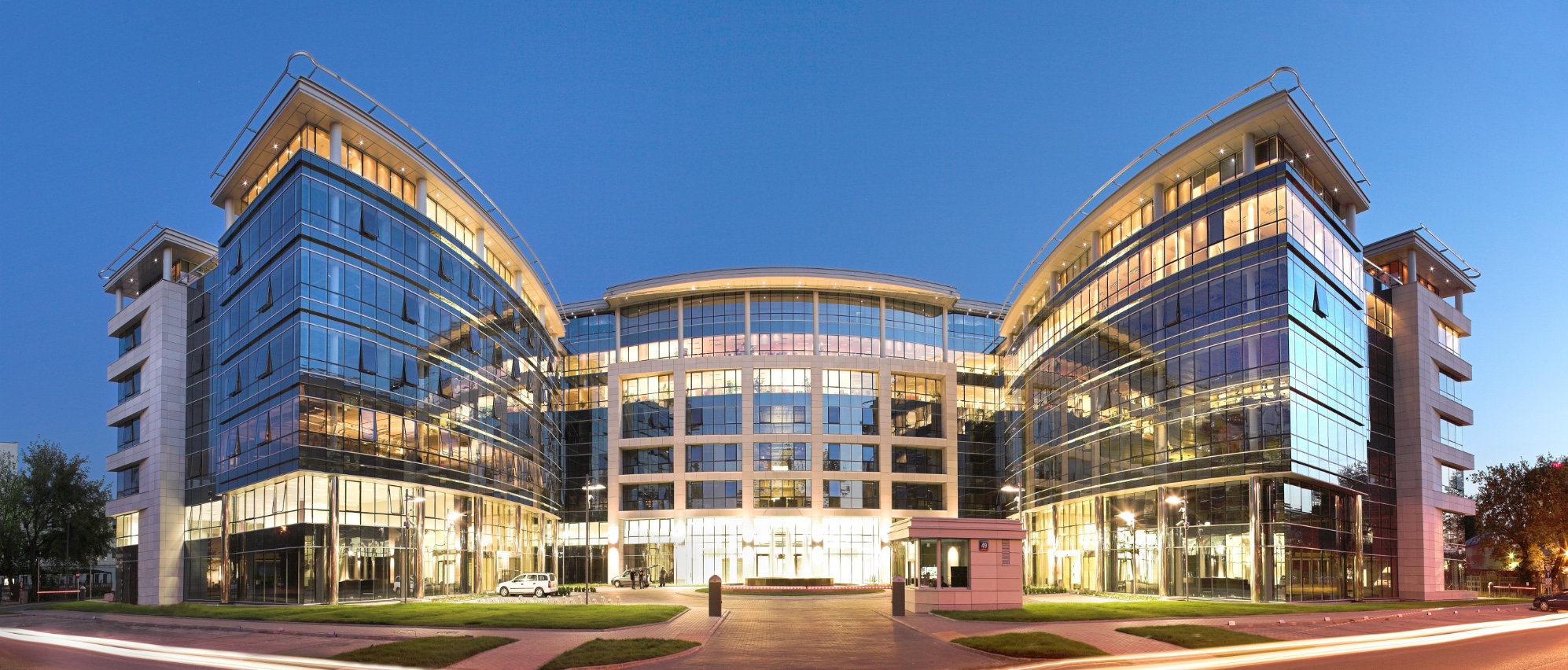
“ We try to raise the bar from project to project. As a result, the Wronia 31 building in Warsaw received the highest possible rating in the BREEAM certification process, i.e. Outstanding. It was also the first Polish office building certified in the BREEAM International 2013 News Construction system at such a high level. We hope that this year our next investment will again receive such a high score. ” – adds Jarosław Zagórski.
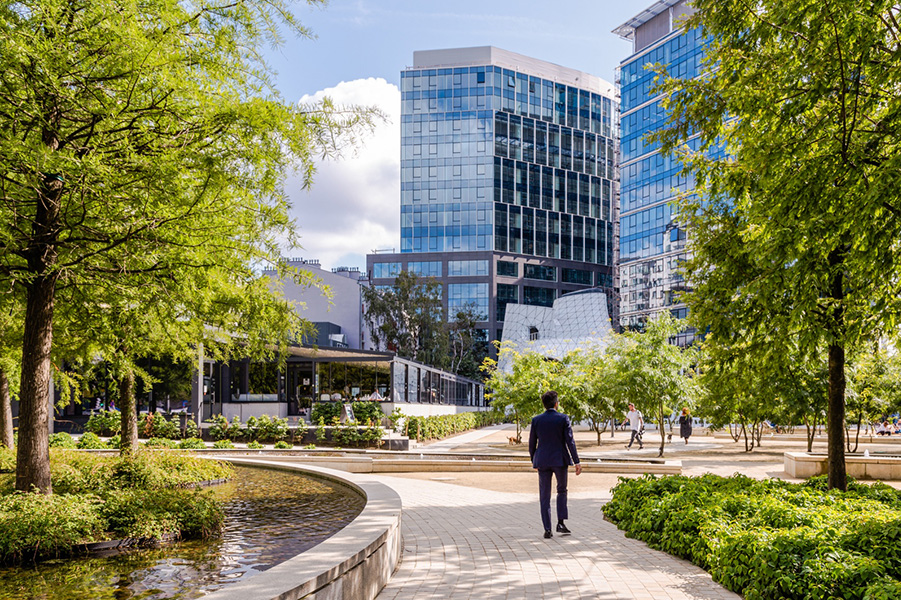
The company also implements groundbreaking projects outside of Poland. In Diegem, Belgium, the ground-breaking building “The Wings” was built, which is the first building in Belgium to use geothermal energy, thereby reducing CO2 emissions by 70%.
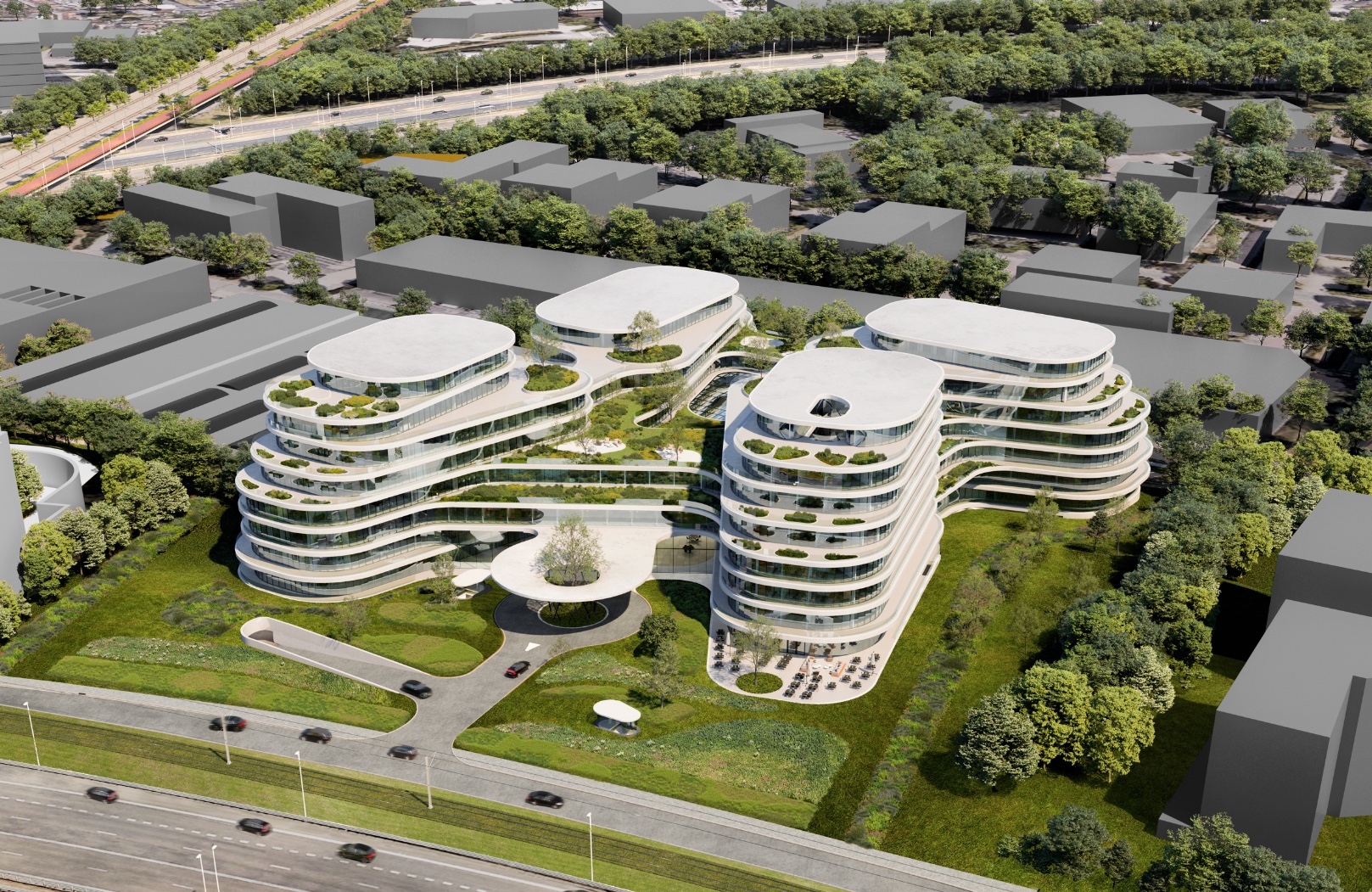
“The Wings has reached a new standard in terms of sustainability. It perfectly combines the need to create good working conditions and improve well-being. It includes 50,000 m² of office, hotel, fitness, restaurant and co-working space – a truly groundbreaking concept and the first building in Belgium to be triple-certified; BREEAM EXCELLENT ****, WELL “GOLD” CERTIFICATE and DGNB “GOLD” CERTIFICATE. “
“We have developed a smart and efficient energy infrastructure that has been developed with the idea of sustainable development in order to meet all future requirements. The building itself generates enough energy to power all business and residential activities on the site – without using any fossil fuels at all. Employees, visitors, investors and tenants can experience comfort and efficiency like never before. ” – says Jeroen van der Toolen, Ghelamco’s CEO director .
Towards energy efficiency
A key measure to achieve a neutral emission balance is to increase the energy efficiency of buildings. Positive changes in this area have been supported by legal regulations for many years. Investors have to abide by the 2010/31/EU Directive which requires them to draw up the energy performance of the building already at the design stage, and must also present the relevant certificate when the building is put into operation. Activities increasing energy efficiency relate to both appropriate thermal insulation of walls and windows, as well as technologies that reduce energy consumption during operation. In buildings, almost exclusively energy-saving LED lighting is used. In new office projects, innovative, integrated BMS remote control and management systems are installed, which use artificial intelligence tools and “learn” the habits and specificity of users’ work. Thanks to this, for example, they turn on heating or lighting only when it is really needed in a given room. It is worth noting that energy saving is not the only priority here – the task of these systems is also to ensure a high level of comfort for people using the building by optimizing the operation of HVAC systems (ventilation and air conditioning) or lighting.
Ecological forms of obtaining energy are also used to heat the building. An example is a geothermal installation system which uses probes, active piles extracting thermal energy from the ground and 24 heat pumps in the National Archives in Krakow .

The office building is covered with a glass shell, which is not only a stylistic accent that increases the attractiveness of the building – it is equipped with a system of shutters controlling air circulation. The installation is supported by 142 photovoltaic modules. Thanks to these innovative solutions, the Archive is independent of the municipal heating network.
Go green!
Greenery plays an increasingly important role in office investments. Its use is associated with almost the same benefits – on the one hand, it contributes to the absorption of carbon dioxide from the atmosphere, and on the other, it positively affects the well-being and psychological comfort of employees. – “ Having real plants, shrubs & trees within our investments is something that is very important to us. In each of our investments, we take care of the vegetation and the surroundings so that it is as easy to maintain as possible for the users and residents. A good example is Plac Europejski adjacent to Warsaw Spire, full of plantings and fountains creating an atmosphere conducive to relaxation “ – says Jarosław Zagórski from Ghelamco.
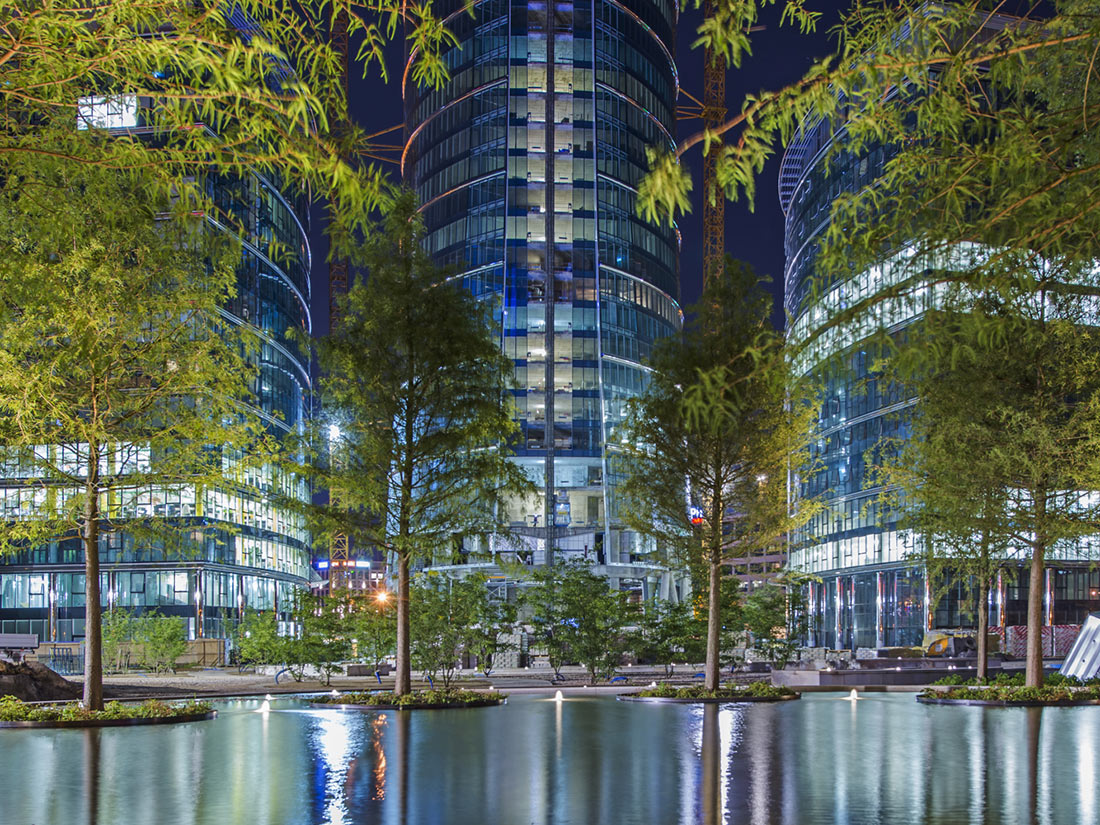
Interestingly, another skyscraper is currently under construction in part of the square. Ghelamco, together with the Municipality of The City of Warsaw, decided to move 42 trees to a new location at Pole Mokotowskie. Additionally, the developer has decided to plant a further 115 trees in Wola district. Some of them will return to Plac Europejski. This is just an example – there are many initiatives that use natural vegetation. Gardens and beehives appear ever more frequently on the roofs of office buildings, and in their vicinity – houses for birds and insects. Rainwater retention systems are becoming more and more common, used for ex. for watering green areas.
More exercise, better health, less emissions
Buildings and office spaces are increasingly organized in a way that encourages users to increase their physical activity and to refrain from using energy-absorbing devices. A comprehensive infrastructure is being organized for cyclists and users of scooters or electric bikes (including changing rooms, showers, handles and charging stations) to persuade employees to leave their cars at home. Staircases are arranged in the center of the office space, which make it easier to move between floors without the need to use elevators. – Solutions of this type can be found in the Warsaw UNIT skyscraper. The investment has already received a precertification in the WELL v2 Core system from the International WELL Building Institute (IWBI), and the high score opens the way for us to receive the final grade at the highest possible level – says Jarosław Zagórski.
What are the key features of such certificates?
– A few years ago, certificates assessing the impact of buildings on the health and comfort of users appeared on the Polish market – WELL and FitWel, WELL has been particularly well received in Poland, as evidenced by several dozen registrations and several completed certifications. The purpose of wellbeing certification, unlike ecological certification, is not to assess the impact on the environment, but rather to create optimal working conditions, favoring productivity and improving the quality of life of users. Through specific parameters of the building and installation, the standard of technical maintenance, cleanliness policy, access to healthy food, controlling and monitoring the quality of the internal environment and strengthening pro-health attitudes among employees, this type of certification helps to increase the productivity and satisfaction of employees, reducing e.g. the number of sick leave days – says Andrzej Gutowski from Colliers.
Optimizing the construction process
When looking for pro-ecological solutions in office construction, you should look not only at the buildings themselves – also at the construction process.
“Using energy in buildings for lighting, heating or cooling, directly or indirectly, leads to carbon dioxide emissions. Building materials – their extraction, processing, production, transport and installation – also emit greenhouse gases. Carbon dioxide emissions therefore accompany almost all stages of construction and operation of buildings, making the construction and real estate sectors highly emitting.
The emergence of global mega-trends, understood as social, economic and environmental changes of a large-scale nature, often with a strong impact, already today pose new challenges for the real estate sector and require an immediate revision of the approach to sustainable development. Investments in modern technologies that will minimize the carbon footprint and provide a database in the form of databases necessary for the further development of innovations will be of key importance. In addition, at the design stage, it is worth taking care of the ecological efficiency of the entire construction process and the use of materials that can be reused or recycled. Eco-efficiency actually reduces the environmental impact of buildings, and is also reflected in lower costs and mandatory fees for demolition, resource destruction and land reclamation. ” – says Łukasz Michorowski, partner in the Audit Department, expert in advisory services for the construction and real estate sector, Deloitte .
The way to increase productivity, and thus reduce its time and reduce emissions, is automation and the use of artificial intelligence (AI) and the Internet of Things (IoT). The multitude of processes and the need to coordinate them is a huge field for creators of optimization technologies. As Deloitte points out , 38% of experts in construction process management believe that the root cause of technological failures are poorly prepared processes and procedures, and 45% of them admit that due to a lack of optimization, they spend more time on tasks than planned.
“One of the most dynamically developing branches of technology is currently the Internet of Things (IoT), which can contribute to lowering energy consumption in buildings through the possibility of intelligent control of lighting and temperature in rooms that are not currently in use. Each new building should be self-sufficient in terms of energy, and it would be even better if it supplied the municipal network with additional production. Manufacturers and suppliers of building materials are also responsible for the size of the embedded carbon footprint. They should strive to maximize the use of renewable energy sources in production and transport and adapt their business models to the principles of the circular economy. It is worth using BIM systems that support the processes of material inventory and inventory monitoring. However, the key link in the decarbonisation process is the owners. They make most of the decisions related to the design of the building, as well as its subsequent operation. ” – adds Łukasz Michorowski .
New technologies can therefore revolutionize the construction industry – from decision making, through logistics and supply chain, to waste management. An example of such innovative solutions is creating a “digital twin” of the construction site thanks to the real-time image from cameras mounted on employees’ helmets. Thanks to this technology, managers have access to up-to-date information on the progress of works and can react immediately in the event of irregularities being detected. A measure to reduce the negative impact on the environment is also maximizing the share of materials that can be recycled in the construction process – this reduces the generation of construction waste. A great challenge for the industry is also to reduce the consumption of concrete and steel, the production of which generates a gigantic carbon footprint.
The pressure to find solutions will intensify
The growing regulatory pressure to implement pro-ecological solutions in office construction means that there are no alternatives to this road. While these technologies are costly, they should be treated as an essential investment. An investment that pays off in the long term as it leads to significant savings in operating costs. According to a study published by Skanska , innovative and environmentally friendly office buildings can generate annual savings of up to PLN 0.5 million. In addition, it is an investment for which there is no alternative – as indicated by the experts of the Wise Europa think tank in the report” Forgotten Foundation. Buildings and Energy Efficiency in the New EU Emissions Charging Architecture ”, the pressure to reduce emissions rapidly and deeply across the economy will increase. Given the importance of the real estate sector in this process, it is expected that high emission buildings will generate increasing costs for their owners and users.
Edited by:
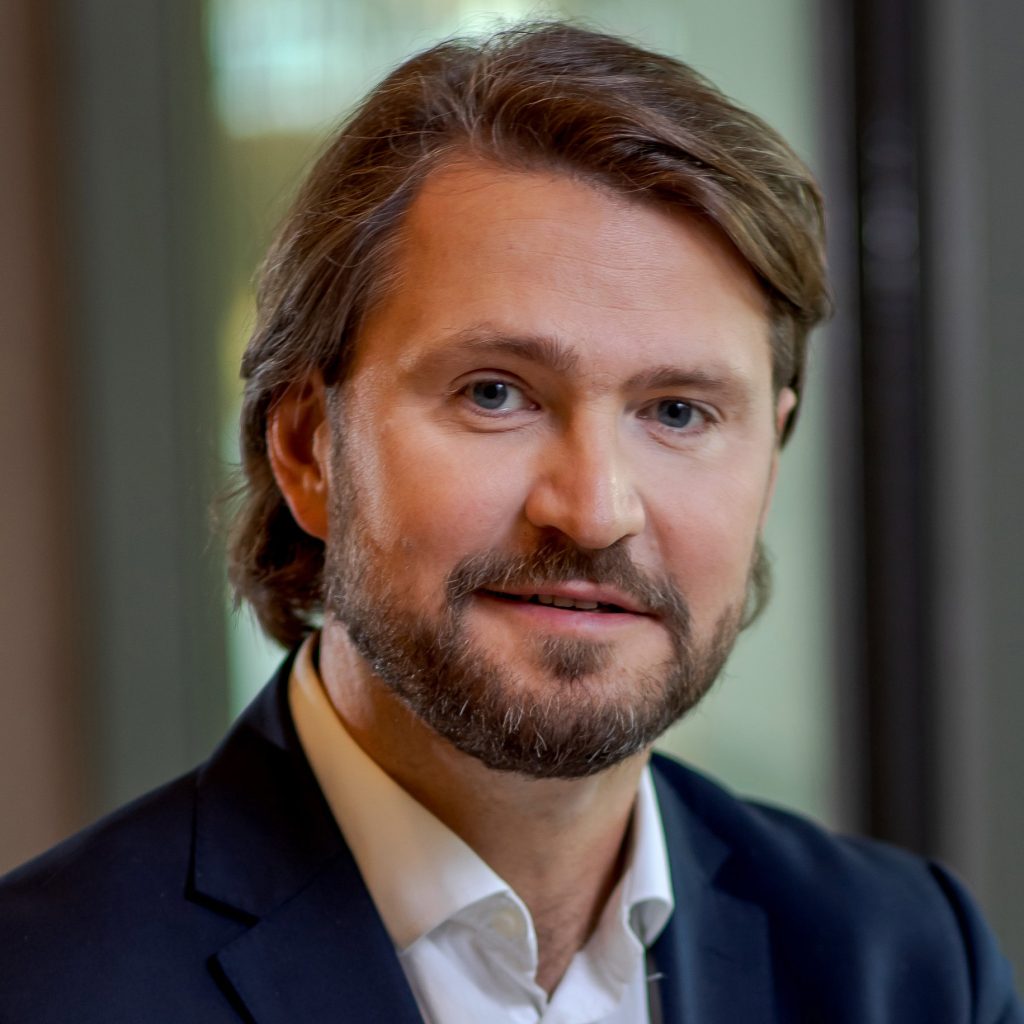
Tomasz Bułhak – Chief Analyst, Green Europe Today
Tomasz Bułhak is currently working with the business, preparing comprehensive analyzes and providing marketing support. Actively monitors changes resulting from new trends and pro-ecological regulations and their impact on the business. For several years he worked in managerial positions in international companies from the automotive sector. He studied Journalism at the University of Warsaw.
Expert commentary:

Andrzej Gutowski – Associate Director, Building Consultancy Services | Green Building Certification at Colliers
Andrzej Gutowski has been involved in the commercial real estate market for several years. Before joining Colliers, he was responsible for Chief Adminstratior for Shopping Centers. Currently, he uses his property manager’s experience in the Green Building Advisory team. He advises clients on sustainable construction and maintenance of facilities and conducts certifications in the WELL, BREEAM and LEED systems, both for existing and planned facilities. He holds the titles of WELL AP, LEED AP and BREEAM International Assessor.

Jarosław Zagórski – Commercial & Business Development Director at Ghelamco
With Ghelamco since 2007. Jarosław Zagórski is responsible for the strategy and development of the commercial real estate of the company as well as supervision over implemented projects. He specializes in commercialization, management of development projects and marketing of office real estate. He has over 20 years of experience in the Polish real estate market. Before joining Ghelamco, he worked at Pricewaterhouse Coopers Properties, Cushman & Wakefield, Healey & Baker Polska, where he became a partner in 2002, and at CBRE as the head of the commercialization department. In his career, he has prepared Ghelamco’s real estate rental strategies: Warsaw HUB, Warsaw UNIT, Warsaw Spire, .big, Wronia 31, Przystanek mBank, Senator, Marynarska 12, Mokotów Nova, Łopuszańska Business Park, Trinity Park III, Crown Square, Marynarska Business Park, Katowice Business Point as well as other prestigious Warsaw properties: Rondo 1, Klif, Kopernik Office Building and Metropolitan.

Łukasz Michorowski – partner in the Audit Department, expert in consulting services for the construction sector and real estate at Deloitte
Łukasz Michorowski has been associated with Deloitte since 2006 and acts as a partner in the Audit & Assurance department. In 2011-13, he worked in the London office of Deloitte as a manager in the audit department supporting companies from the construction and real estate industries. Łukasz has extensive experience in auditing large and organisationally complex capital groups, as well as public companies listed on the Warsaw Stock Exchange. He has also been involved in a number of other advisory projects, including financial and accounting due-diligence, transaction advisory, and special purpose information auditing. Łukasz is also a partner responsible for Deloitte’s cyclical publication on the construction sector “Polskie Spółka Budowlane”







